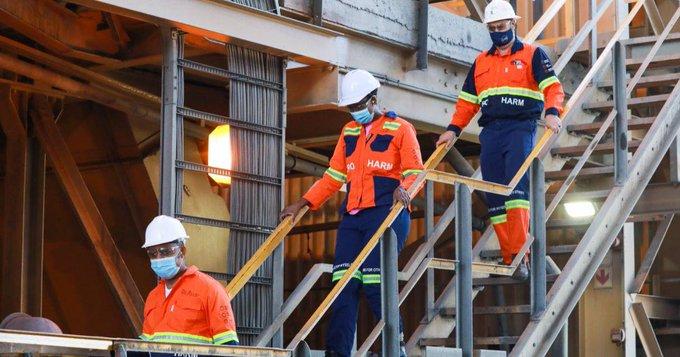Lightning : It May have already stuck you more than once
With increasing use of electrical and electronic systems, lighting protection has become a top priority for buildings such as hospitals, and commercial or residential establishments.
The technology for lightning protection has not exactly changed for the past 200 years since it was first invented. It is only certain aspects of the overall system that have changed. With increasing use of electrical and electronic systems, lighting protection has become a top priority for buildings such as hospitals, and commercial or residential establishments.
THE BASIC COMPONENTS OF LIGHTING PROTECTION TECHNOLOGY HAVE REMAINED THE SAME
- Air terminal rod
- Down conductor
- Earthing system
The only significant change in the modern lightning protection system is the design concept of the lighting protection system: Where should the system be placed, what should be the size of lightning arrester, copper down conductor and how should the earthing system be.
HERE’S HOW LIGHTNING CAN DAMAGE YOUR WIRING AND EQUIPMENT
Lightning causes electrical or electronic damage which is not immediately identifiable and manifests itself much later. Surges caused due to lightning leads to stress on the insulation thus reducing its effectiveness. This later results in short circuits, which in turn leads to equipment failure or cause fire accidents.
LIGHTNING PROTECTION SYSTEMS
Lightning protection is classified into 4 levels with level 1 being the advanced level protection, while level 4 being moderate protection.
| Level | Protection range in kA | Used for | Efficiency |
| I | 3kA to 200kA | High rise buildings and big hospitals Airports Essential Services Defence Nuclear Power Stations | 99% |
| II | 5kA to 150kA | Low rise Hospitals and Hotels Fuel Stations, Compressor Stations and similar installations Chemical Sector
| 98% |
| III | 10kA to 100kA | Banks Schools Residential buildings Community halls
| 97% |
| IV | 16kA to 100kA | BanksSchoolsResidential buildingsCommunity halls | 84% |
The system should be designed in such a way that it can intercept the lowest current, while its component should be designed and tested such that they can carry highest level of current. A lightning system component must be capable of sustaining at least 100 kA current

CARRY OUT A RISK ASSESSMENT
Carrying out a risk assessment tells you what the tolerable risk is, and what the actual calculated risk is. For example, a low rise hospital is believed to need a level-II lightning protection. However, risk assessment considers factors such as fire risk and touch voltage. If these are found to be high in the risk assessment, you would find that the hospital in fact needs level-I lightning protection.
BE CAREFUL WHEN SELECTING COMPONENTS OF LIGHTNING PROTECTION SYSTEM
Compounds that make up the components of external lightning protection system are exposed to the environment and can have various physical and mechanical effects of exposure. These could range from corrosion, rise in temperature, melting, deformation or dislodging. Hence, the components must be tested for current carrying capacity. Conventionally, copper has been a preferred metal in down conductors, due to its high conductivity and better heat tolerance.
USE TYPE B EARTHING SYSTEM
This type of earthing system comprises an external ring conductor which is in contact with the soil for at least 80% of its total length, or a fundamental earth electrode. Such earth electrodes may also be meshed. This type of system is ideal for sensitive establishments such as hospitals, military establishments, factories etc.
INTERCONNECTION OF EARTH PITS
Earthing pits can be interconnected to create a common earth grid. In case that cannot be done, they can be joined using Isolation Spark Gap. This will help bring all earthing pits at the same potential in case there is lightning.
USE SPECIAL CABLES
The cables which we cannot connect directly with the equipotential bar need to have sufficient gap from the lightning protection system. Otherwise, it leads to uncontrolled flashover, which causes fire. Cable with increased dielectric strength which is also tested for current discharge may be used to avoid specific separation distance to live parts of the building,
USE SURGE PROTECTION DEVICE
Deploy shock pulse monitoring (SPM) consisting of a coordinated Surge Protection Device system. The guidelines of where to use the surge protection system are exhaustively covered in the National Building Code.
LIGHTNING PROTECTION FOR ROOFTOP SOLAR PV SYSTEMS
Installation of solar PV systems on rooftops does not actually increase the possibility of lightning. However, such systems may lead to injection of substantial lightning interference into the building.
Rooftop solar PV systems are a unique set of electrical system which is also exposed and susceptible to lightning. Special cabling arrangements need to be made to control lightning-induced overvoltage in solar PV systems. Forming large loops of cables is to be avoided. If the cables are looped positively and connected to the array junction box, it results in the rise of large magnetic area that can be minimized by the daisy-chain wiring and leap-frog wiring methods.
CONCLUSION
Lightning is a naturally occurring phenomenon and has the ability to damage the electrical networks and equipment over the period of time. Lightning protection systems and periodic inspection needs to be done to avoid any emergency situation. Components and material need to be carefully selected when devising a lightning protection system. The system should be designed in such a way that it can intercept the lowest current, while its component should be designed and tested such that they can carry highest level of current.

